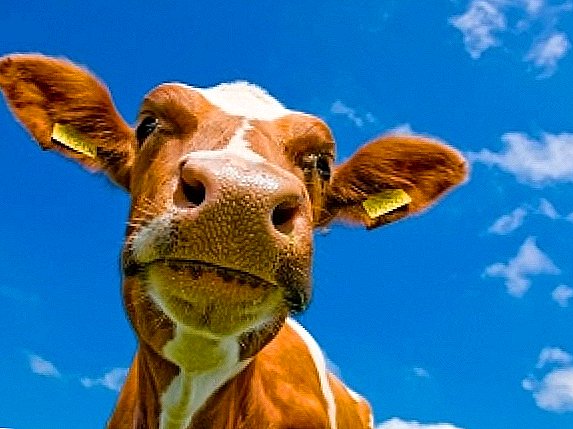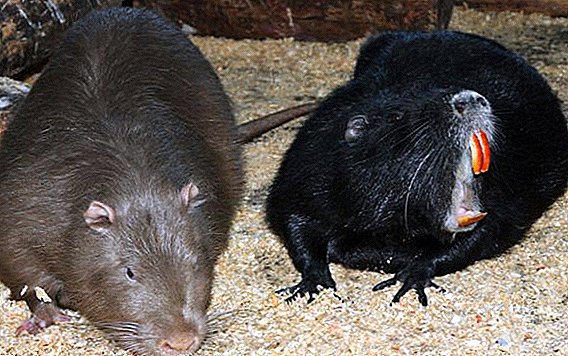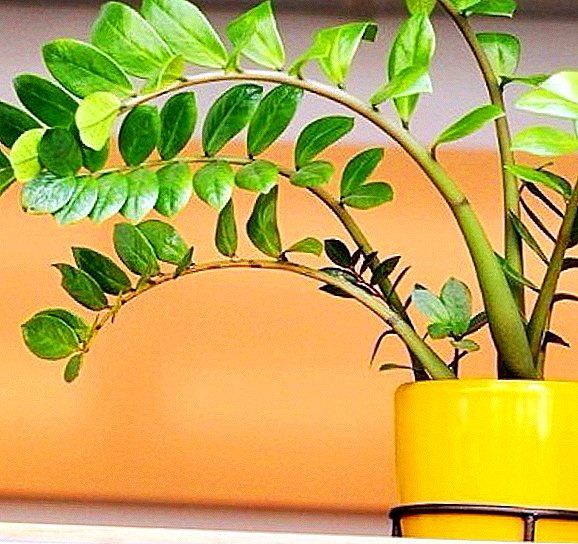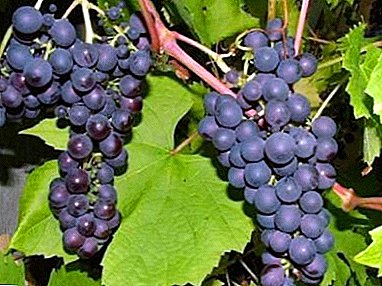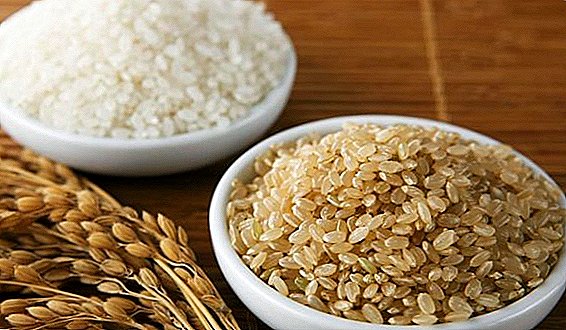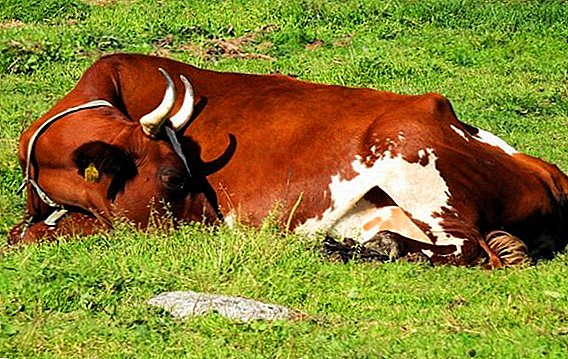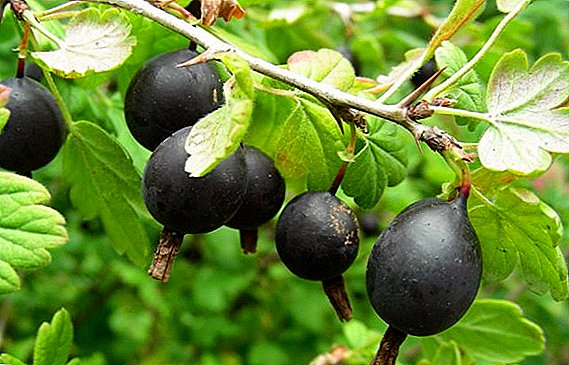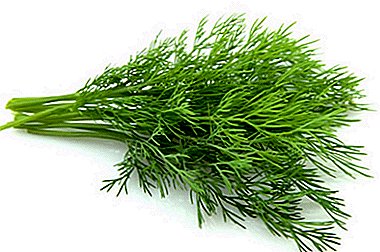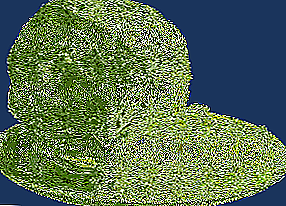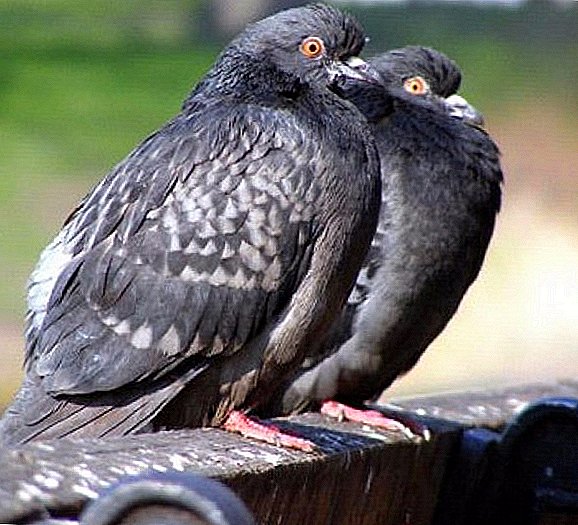 Pigeon droppings are known as fertilizers created by nature itself, so many are wondering how to use them to increase the yield of their plots. It differs from other types of fertilizers by increased capacity of nitrogen and various substances needed by plants.
Pigeon droppings are known as fertilizers created by nature itself, so many are wondering how to use them to increase the yield of their plots. It differs from other types of fertilizers by increased capacity of nitrogen and various substances needed by plants.
Composition and use
Only leguminous plants are able to consume nitrogen directly from the atmosphere, while others need nitrogen directly contained in the soil. If the soil is not fed by fertilizers with a nitrogen content, then its share will gradually decrease.  Nitrogen is the main building substance for plants. But this element is easily washed away by precipitation. This leads to a drop in the level of the crop, slower growth of plants, they become more susceptible to various diseases.
Nitrogen is the main building substance for plants. But this element is easily washed away by precipitation. This leads to a drop in the level of the crop, slower growth of plants, they become more susceptible to various diseases.
It is possible to increase its amount in the soil by adding bird droppings. It is preferable to use pigeon. The mass fraction of nitrogen suitable for plants depends on the diet of birds.
Dry excrements usually contain it at 1.75%. Moreover, if short-term legumes are included in the nutrition of pigeons, the level of nitrogen in guano will be higher.  In addition, manure contains potassium and phosphorus salts, which plants, iron, manganese, zinc, cobalt and copper also need. The composition of this fertilizer has such a large variety that it is suitable for use as a top dressing of vegetable crops, garden and even indoor plants.
In addition, manure contains potassium and phosphorus salts, which plants, iron, manganese, zinc, cobalt and copper also need. The composition of this fertilizer has such a large variety that it is suitable for use as a top dressing of vegetable crops, garden and even indoor plants.
You will be interested to learn how to prepare and apply chicken droppings.Of particular importance are the conditions in which the bird is, the food and the influence of the habitat. It is logical that pigeons living in specially built for them places and regularly feeding on food will produce better litter than their relatives living in natural conditions.
Did you know? The mass fraction of nitrogen and phosphorus compounds in pigeon guano is 4-5 times higher than this figure in waste of cows or horses.Producers of fruits and vegetables are not particularly worried about the safety and naturalness of the final product, using fertilizers of chemical origin. Because of this, there are highly active nitrates in food. The product obtained with the help of pigeon droppings will have a higher level of quality and a positive effect on human health.
 Guano pigeons is absolutely safe fertilizer subject to its proper preparation and use. This is a very concentrated substance, and a careless approach can only harm the plants.
Guano pigeons is absolutely safe fertilizer subject to its proper preparation and use. This is a very concentrated substance, and a careless approach can only harm the plants.How to properly collect and store
As the shelf life increases, the amount of nitrogen in the fertilizer decreases. Untreated feces stored in heaps will lose half of their useful qualities in a month, so proper storage is the most important part of its successful use.
Important! To use the waste of pigeons in its raw form is dangerous for plants.Humus organic matter in the guano can damage the roots of plants and lead to the appearance of "black" legs. Therefore, we prepare the fertilizer before application to the soil. Gardeners with experience use solutions with droppings, in dry form, or prepare composts by adding straw, chips and peat.
 Drying pigeon droppings will help preserve all its beneficial properties. The value in this case is the highest. For these purposes, you can use a heat oven with high temperatures. Additionally, it will save the guano from harmful microorganisms.
Drying pigeon droppings will help preserve all its beneficial properties. The value in this case is the highest. For these purposes, you can use a heat oven with high temperatures. Additionally, it will save the guano from harmful microorganisms.Application litter
There are several ways you can use pigeon droppings in your garden as fertilizer. If top dressing using pigeon excrement is correct, then the plants will be able to absorb at least half of the nutrients, including nitrogen.
Litter feeds tomatoes, cucumbers, zucchini, potatoes and other crops. It is recommended to make it in the spring, during the period of gaining strength in plants. But this should be done very carefully so as not to harm the plants.  The advantages of this fertilizer over the others can be its disadvantages. It can not be used in its natural form due to the saturation of the chemical composition and force of exposure.
The advantages of this fertilizer over the others can be its disadvantages. It can not be used in its natural form due to the saturation of the chemical composition and force of exposure.
Guano can be used for dressing both dry and dissolved in water. In a dry form it is spread by an identical layer on a site, generally in the fall, mixing with the soil. In liquid form, the efficiency and speed of which is higher, contribute in the spring and summer periods.
Did you know? Pigeon droppings are popular and widely used in England, Peru, China, Belgium and even on the islands of Japan.
Dry
The use of dry litter is the most convenient and fast type of its processing. Drying fertilizer in two ways.: in a natural way under the sun or in a warm place, or with the help of special stoves that will make it faster and save more nutrients.  Dry pigeon guano is used as an effective fertilizer for garden trees. The size of the tree determines how much fertilizer it needs. The medium-sized tree needs about 3-4 kg of litter per season.
Dry pigeon guano is used as an effective fertilizer for garden trees. The size of the tree determines how much fertilizer it needs. The medium-sized tree needs about 3-4 kg of litter per season.
We also recommend that you familiarize yourself with the "Floreks" granulated chicken litter.Massive trees require at least three times more. The guano spreads evenly around the tree and drops to the half of the spade bayonet.
In solution
To prepare a solution or mix with other fertilizers - the fastest, but not the safest way to use it. Failure to respect the exact proportions may harm the plants or the solution will be ineffective. Therefore, for the solution is best to use pre-dried guano.
Did you know? Studies confirm that fertilizing with liquid pigeon droppings gives the greatest effect for fertilizing vegetable and garden plots.In order to ensure proper feeding pigeon droppings need to adhere to the instructions on how and in what form it is best to breed guano.
 To prepare a solution of water they take ten times more than feces, and if you are afraid of harming plants, then at twelve. Particular attention is paid to the timing of its aging. On average, it is 9-10 days. If you insist more, the solution will begin to lose its desired qualities.
To prepare a solution of water they take ten times more than feces, and if you are afraid of harming plants, then at twelve. Particular attention is paid to the timing of its aging. On average, it is 9-10 days. If you insist more, the solution will begin to lose its desired qualities.To increase the nutritional value of top dressing will help add phosphate mixtures or wood ash. The readiness of the solution is indicated by the absence of gas bubbles emitted to the surface of the liquid. Content will be divided into two parts: the thick and the saturated liquid.
Important! For feeding plants you can use only the liquid component of the solution!
Composting
Pigeon droppings compost should be stored as a heap. It is laid alternately with straw, sawdust and peat. This will increase the nutritional value of the compost.  For the preparation of this fertilizer will take about two months, so the preparatory points should be addressed in advance.
For the preparation of this fertilizer will take about two months, so the preparatory points should be addressed in advance.
The compost is applied in the fall during the period of digging or plowing the plots at a rate of 2 kg per square meter.
Preparing fertilizer with pigeon droppings in one of the three ways described, it is necessary to ensure its safety until the moment of application.  For storage, only fertilizer that has been processed is suitable, as fresh litter will lose its usefulness very quickly. For a long period it is better to harvest it in the form of compost.
For storage, only fertilizer that has been processed is suitable, as fresh litter will lose its usefulness very quickly. For a long period it is better to harvest it in the form of compost.
Signs of oversupply, or How to do no harm
It is very important for gardeners to know how and when to do bait in order to use pigeon droppings without harming the plants.
The excess fertilizer is manifested in the following signs:
- the appearance of white bloom on the soil;
- leaf wilting;
- slower growth in the summer;
- dry leaf tips.
 Observing these signs in your plants, you should refuse to apply fertilizer, since even the utility of pigeon droppings can turn into great harm.
Observing these signs in your plants, you should refuse to apply fertilizer, since even the utility of pigeon droppings can turn into great harm.Like pigeon dung, organic fertilizers include bone meal, fish meal, whey, potato peelings, egg shells, banana skins, tobacco dust, onion peel, charcoal and nettle.
Security measures
Fresh pigeon dung is a harmful substance for humans, as it includes the eggs of parasites. All actions must be carried out strictly following safety procedures.  You can wear a work suit with rubber gloves. Guano in dry form is also unsafe. Its microorganisms can cause serious health problems. For protection, it is desirable to use a respirator or mask.
You can wear a work suit with rubber gloves. Guano in dry form is also unsafe. Its microorganisms can cause serious health problems. For protection, it is desirable to use a respirator or mask.
Reasonable use of pigeon manure is one of the prerequisites for the successful cultivation of plants. Your garden will thank for taking care of a quality crop for more than one year in a row. Use these recommendations, and success is guaranteed!


